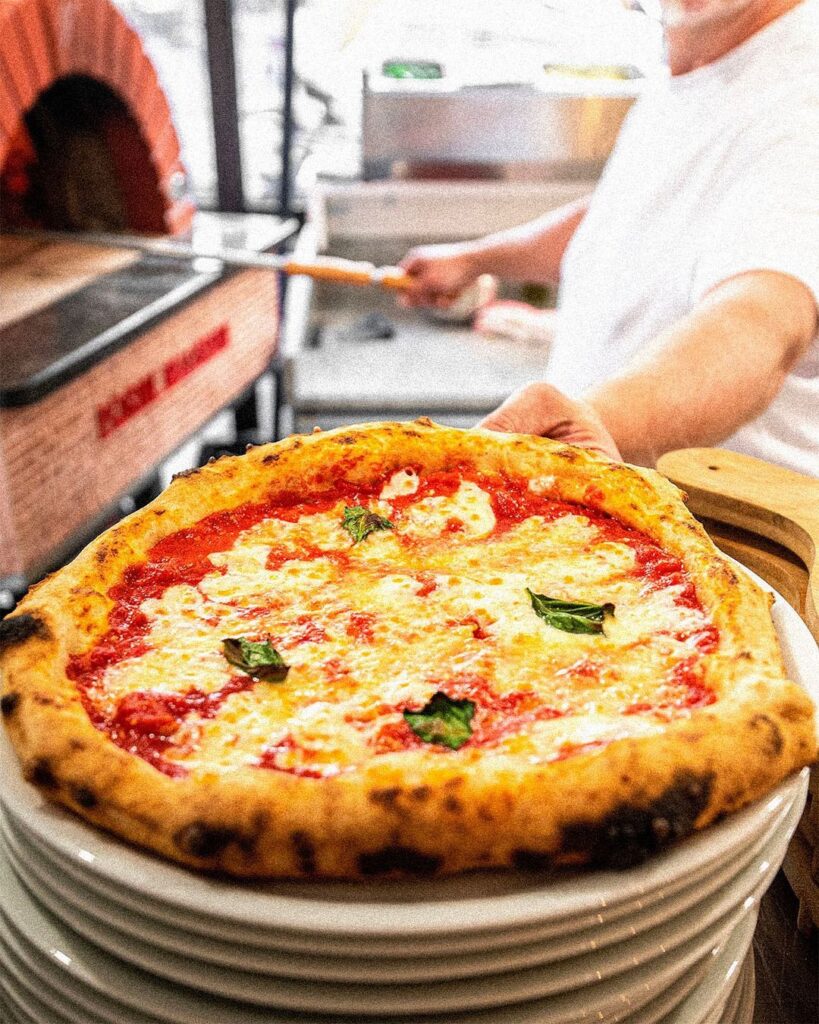In pizzerias all over the world, from Napoli to Delhi, you’ll see the promise of “True Neapolitan Pizza.” But is it genuine?
The art of Neapolitan pizza is not a matter of opinion; it is a cultural heritage protected by a precise set of rules known as the Disciplinare.
This guide is for the purists, the passionate, and the professionals who believe in authenticity. We will delve into the official regulations that separate a true Neapolitan pizza from a simple imitation, and explore why these rules are fundamental to creating a culinary masterpiece.
What is the “Disciplinare STG”? A Mark of Authenticity
The “Disciplinare” is a legal document that outlines the traditional recipe and preparation method for Neapolitan Pizza. This isn’t just a recipe; it’s a standard that allows the product to be certified as a “Specialità Tradizionale Garantita” (STG), or “Traditional Specialty Guaranteed.” This European Union mark protects culinary traditions and ensures that any pizzeria claiming to serve “Vera Pizza Napoletana” adheres to these uncompromising standards.
The 5 Pillars of Authentic Neapolitan Pizza
The disciplinare is built upon five sacred pillars. Deviating from even one means the result, while perhaps delicious, is not true Neapolitan Pizza.
1. The Dough (L’Impasto): The Four Sacred Ingredients
The foundation of it all. The dough must be made only with Type “00” or Type “0” flour, water, salt, and yeast (brewer’s yeast or natural starter). The hydration must be precise, and the dough must be left to rise for at least 8 hours. The result is a soft, elastic, and highly digestible base.
2. The Shaping (La Stesura): By Hand, and Only By Hand
This is non-negotiable. The use of a rolling pin or any mechanical press is strictly forbidden. The dough must be shaped by hand using the traditional “a schiaffo” (slapping) technique.
This method moves the air from the center to the edge, creating the characteristic puffy crust, the cornicione.
3. The Toppings (I Condimenti): The Purity of Simplicity
The disciplinare recognizes only two classic variations:
- Marinara: San Marzano tomatoes, fresh garlic, oregano, and extra virgin olive oil.
- Margherita: Mozzarella di Bufala Campana DOP (or Fior di Latte), fresh basil, and extra virgin olive oil.
The use of these specific, high quality ingredients is fundamental.
4. The Baking (La Cottura): 90 Seconds of Fire
The pizza must be cooked in a traditional wood-fired oven (“forno a legna”) at an incredibly high temperature of approximately 485°C (905°F). The baking must be rapid, lasting no more than 60-90 seconds.
This intense heat cooks the pizza instantly, creating a soft, moist center and a perfectly charred, puffy crust.
5. The Final Appearance (L’Aspetto Finale): The Signs of Perfection
A true Neapolitan pizza is visually distinct. It should be round, no more than 35cm in diameter, with a raised, golden brown crust (the cornicione) of 1-2cm. It should be soft, fragrant, and feature the characteristic “leopard spotting” small, charred bubbles on the crust.

Beyond Tradition: Bringing Authenticity to the Global Stage
Knowing the rules is one thing. Implementing them consistently in a professional, profitable restaurant especially in a dynamic and demanding market like India is another challenge entirely. It requires not only a master’s knowledge of the craft but also deep expertise in sourcing ingredients, selecting the right equipment, and training a team to execute flawlessly.
This is where tradition meets modern consultancy.
While this site, Pizzachef.it, is dedicated to the soul and history of the craft, our partners are experts in professional application.
For restaurateurs and professionals aiming to build a successful business based on these authentic principles, the expert consulting services at Pizzaiolo.in provide the strategic guidance needed to turn passion into profit.
A Legacy, Not Just a Lunch
The Disciplinare of Neapolitan Pizza is more than a recipe; it’s a declaration of cultural identity. It ensures that every time you enjoy a “Vera Pizza Napoletana,” you are partaking in a tradition of craftsmanship, quality, and passion that has been perfected over centuries.
It’s not just a pizza; it’s a masterpiece.


